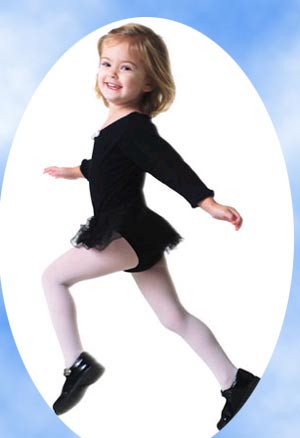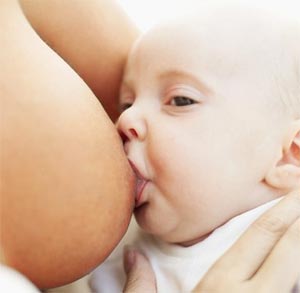Fine Motor Skill

Almost every parent has questions and doubts about the normal development of children. Developing and nurturing motor skills is a vital area of a child's growth and development. Take a look at fine motor skills and large motor skills or gross motor skills. What are the activities that foster these skills? What role do these skills play in the child's personality development?
Motor skill development
Motor skills involve movement of the muscles. While gross motor skills are involved with the movement of the entire body, fine motor skills are about smaller actions. Parents watch with wonder when the child develops his motor skills as he grows. It is essential to involve them in activities that foster these skills and gives them a sense of achievement. This is crucial for physical and mental health. Development of motor skills is independent of the child's sex, size and strength. Children may differ in the rate at which they acquire and master motor skills. As a parent, you can provide many a fun activity that will keep the little one engaged.
Fine motor skill development
Fine motor skills allow delicate and finer manipulation of objects. Fine motor development takes place after most of the gross motor skills are mastered. Fine motor skill development involves precision movements and is acquired over time and experience. Dexterity is the cornerstone of fine motor skill development. Fine motor skill development involves control over muscular, skeletal and neurological functions. A child on the threshold of a play school is ready for fine motor skill activity.
A child can be encouraged to insert his favorite CD into the computer CD drive. You could possibly assist him with the mouse and keyboard - it will go a long way in improving hand and eye coordination. How about baking some cookies with the kid? The fun activity will also yield a batch of yummy cookies. Stirring the batter and spooning out the cookie dough and decorating it with pieces of nuts can be exciting for a kid - and he gets to develop his fine motor skills too!
Fine motor skill activity
Blocks are among the first toys that work at a child's fine motor skill development. What may seem like a game to you is serious business for the little child - one who is trying hard to get the blocks stacked up all correctly. A child can be asked to bead threads or colored pasta on a string. This activity requires considerable concentration and steady hands. Older children can be encouraged to paint and color picture books. Getting their untrained fingers to color within a specified boundary involves practice and patience.
Young children can work on simple puzzles with large pieces. It not only aids control over finer movements but it also sparks visual exploration. A wonderful activity for young children is playing with clay or play dough.
Kids can have hours of fun kneading the dough and making interesting items with it. You can give them some rollers, moulds and cookie cutters to come up with exciting pieces. Some old magazines and kid scissors are all you need to set the eager kid on a fine motor skill activity. The child has to exercise the muscles correctly to position the scissors with his thumb and middle finger in the handles of the scissors and the index finger on the outside of the handle.
Gross motor skill activity
Gross motor skills are large motor skills, ones that involve the larger muscles such as those in the arms, torso and legs. Activities involving gross motor skill require balance and coordination. Such skills allow the child to move in a variety of ways. Gross motor skills are essential in body development. A child can comfortably move on to fine motor skills only after he has gained reasonable large motor skill.
Gross motor skill begins to develop right from infancy itself. Gross motor skills are the first on the child's milestone charts. Gaining head control is probably one of the first motor skills that an infant develops - this happens when the neck muscles are sufficiently mature. This process moves lower down as the shoulder and hands gain some control.
The trunk and the hips and then the legs attain better balance and coordination. It will be noticed that gross motor skills such as turning the head from side to side might occur around 2 weeks whereas holding the head upright tends to happen around four to five months. Around the same time, the infant tries to bring his hand up and grasp an object. While a child can sit up independently around eight or nine months, he can walk and run only few months later.
Jumping, hopping, climbing, skipping and catching - these are activities that kids master over time. Running involves considerable gross motor coordination. Hopping and climbing are also other activities that encourage gross motor development. Ball play games are ideal for kids as they grow beyond a year. This kind of activity also fosters good control over the body.
Top of the Page: Fine Motor Skill
Tags:#fine motor skill #motor skill #gross motor skill #motor skill development #fine motor skill activity #large motor skill #gross motor skill activity #fine motor skill development #fine motor skill child
 Parenting
Parenting Stages of Growth
Precocious Puberty
Nutrition for Kids
Developmental Milestone
Empty Nest Syndrome
Infants
Sudden Infant Death Syndrome
Infant Gas Drops
Milk Allergy in Infants
Infant Reflux
Infant Nutrition
Infant Bathing
Infant Toy
Infant Colic
RSV in Infants
Asthma in Infants
Infant Brain Development
Babies
Baby Milestone
Baby Teething
Toddler Food Recipe
Baby Nursery Furniture
Baby Food Tip
Baby Monitor
Baby Burping
Children Care
 Regular Bedtime for Toddlers
Regular Bedtime for Toddlers Child Care
Kid Summer Camp
Kid Gym
Tween Parenting
Benefits of Breastfeeding
Oppositional Defiance Disorder
Attention Deficit Hyperactivity Disorder - ADHD
Kid Homework Help
Fine Motor Skill
Family Parenting
Single Parenting
Specialty Toy
Child Playhouse
Playgroup
Causes of Child Obesity
Autistic Child
Learning Disability
Toddler Activity
Activities for Toddlers
Child Safety Tip
Child Safety on the Net
Allergies in Toddlers
Top of the Page: Fine Motor Skill
Popularity Index: 101,680

